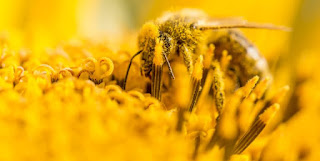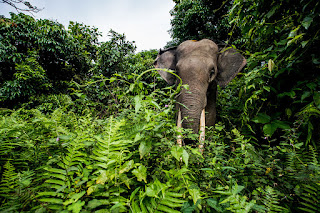 Most people learn from a young age that bees are pollinators, and we need them to maintain our food supply. While all that is true (bees are the number-one pollinator after all), they are by far not the only creatures out there pollinating the world. In fact, there are myriad pollinators at work keeping things going. Sometimes these pollinators are responsible for a specific plant species so their essential work can be overlooked by the world in general. Other times, the way they move through their lives makes them surprising pollinators. In honor of Pollinator Week this week, I’d like to introduce you to some of these lesser-known pollinators.
Most people learn from a young age that bees are pollinators, and we need them to maintain our food supply. While all that is true (bees are the number-one pollinator after all), they are by far not the only creatures out there pollinating the world. In fact, there are myriad pollinators at work keeping things going. Sometimes these pollinators are responsible for a specific plant species so their essential work can be overlooked by the world in general. Other times, the way they move through their lives makes them surprising pollinators. In honor of Pollinator Week this week, I’d like to introduce you to some of these lesser-known pollinators.
Chocolate Midges (Theobroma cacao) –
This adorable Australian creature serves as an important pollinator for
a number of native Australian plant species. A mouse-sized marsupial, the Honey Possum does
not actually eat honey. Instead, it lives on a diet of nectar and pollen, the
only marsupial to do so. These cute little guys need up to 7mL of nectar a day
and have long bristly tongues that are perfectly adapted to retrieve what they
need from the flowers. They mostly spend their time scampering around in trees
with their mouths and bodies dusted with pollen. This foraging behavior works
perfectly to spread the pollen of their host plants. Honey Possums live in
southwestern Western Australia. Their habitat was much broader at one point,
but they’ve lost ground due to wildfires and human encroachment. Luckily, there
are dedicated conservationists working to keep this unique species around (read
more here). Australia is
also home to another super-cute mammalian pollinator – the Sugar Glider. These
nocturnal animals have become popular in the exotic pet trade in recent years,
but they are not domestic animals and should not be kept in captivity. They should remain in the
wild, pollinating like the Honey Possum.
I know –
“Mosquitoes? As Pollinators?”, but the answer is “Yes!”. For one thing,
mosquitoes don’t live on blood. This is a common misconception, but the fact is
that only females draw blood and that is solely for the purpose of enriching
their eggs. The males, and non-egg-laying females will take advantage of the
nutrition found in flower nectar. A visit to the nectar bar often results in
pollen becoming attached and then distributed as the mosquito moves away. This
behavior has been fine-tuned in one mosquito species, the Snow Pool Mosquito.
These guys are pretty widespread across northern parts of the US and one
particular native orchid species relies on them for pollen distribution. The Blunt-Leafed Bog Orchid (aka One Leaved Rein Orchid) is a pretty but unassuming
flower that these mosquitoes have chosen to care for. The Snow Pool Mosquito
will climb right into the orchid to partake of the nectar found on the floral spur
and as it laps it up, pollen becomes attached to its eyes and head. As they
move away with their new pollen hats, they look like they have devil horns.
Granted, this is a small insect in an obscure environment, but it goes to show
that even the heavily demonized mosquito can have an essential wildlife
function.
Many Types of Lizards –
With these small reptiles scampering all over the world, it’s no wonder they get some pollinating done. But how does this work since these animals don’t have specially designed tongues or masses of pollen-capturing fur? Scientists in New Zealand have figured that out- In the course of their daily activities lizards will get tree sap and honeydew from aphids on their bodies. When they climb into a flower for a little sip of delicious nectar, pollen will adhere to the sticky substances. And, since one flower is never enough, the next sip can result in pollen transfer. In Mauritius, the Blue-Tailed Day Gecko is one of the many species of active lizard pollinators. In fact, lizards appear to be important pollinators in many island ecosystems. It is believed that lizards have had to adapt to limited (or declining) food sources on their island homes and so they’ve turned to calorie-rich flower nectar.
Sumatran Elephants – ?
Okay, I’m not really sure about this one but it makes for a good story.
Some say that jungle elephants in Indonesia help to spread the pollen of the
world’s largest flower, the Rafflesia. Extraordinarily
large flowers have extraordinarily large pollen and need extraordinarily large
pollinators. Or so the story goes. There is even a word for this kind of pollination
– Elephophily. If any of
this is truly true, it could be part of why these flowers are so very rare.
Take Care.
Submitted by Pam











No comments:
Post a Comment